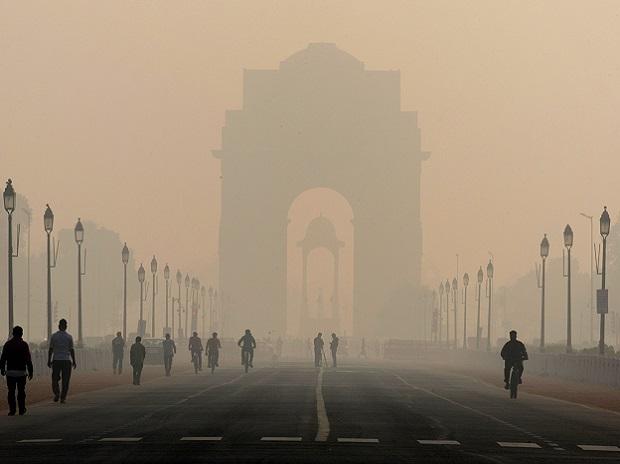Air Pollution in a poor condition in the capital city- Delhi and air quality in Delhi remain poor on the bar of The System of Air Quality and Weather Forecasting and Research (SAFAR). An AQI of zero to 50 is deemed GOOD, 51 to 100 SATISFACTORY, 101 to 200 MODERATE, 201 to 300 POOR 301 to 400 VERY POOR and 401 to 500 SEVERE. On December 13, 2021, The System of Air Quality and Weather Forecasting And Research (SAFAR) reported an air quality index of 256 in the morning. The city is increasingly suffocated by pollution, causing catastrophic health damage and trying to identify the causes of air pollution in Delhi region.
But some Delhi residents are so used to the bad air that is a part of everyday life that they say they barely notice it. Delhi, the capital of India, has the worst air quality of any major city in the world, according to a WHO survey of 1,650 cities around the world. According to Greenpeace’s analysis of IQAir data, tens of thousands of lives are poisoned every year in Delhi.
Causes to the Delhi Air Pollution
Frequently considered the most polluted capital in the world, air quality in Delhi has deteriorated due to burning stubble, emissions from transport, suburban coal-fired power plants and other industries, and incineration of waste and dust. Here are the main causes to the delhi air pollution.
The most important reasons for Delhi’s alarming air pollution levels include the city’s landlocked geography, crop burning in neighbouring states (Haryana and Rajasthan, Punjab), vehicle emissions, industrial pollution and large-scale construction work. As a result, experts say New Delhi, despite being one of the greenest cities in India, is also exposed to pollutants from Afghanistan and Pakistan.
Dust from the Thar Desert, or the Great Indian Desert, in the northwestern part of the subcontinent, exacerbates Delhi’s pollution. Delhi’s pollution problem is also caused by the livestock factor as smog and other harmful particles are produced by farmers burning crops in other states. The main sources of particulate matter emissions in Delhi are equally large power plants and refineries, cars and stubble burns.
Causes to the Delhi Air Pollution – Study
CSE released its study on Thursday. Simultaneously based on real time data on source contributions from the Decision Support System for Air Quality Management of IITM in Pune. It has been made clear in this analysis that vehicles contribute more than half of the pollution in Delhi’s air. It is followed by household pollution 12.5-13.5 percent, industry 9.9-13.7 percent, construction 6.7-7.9 percent, garbage burning and road dust between 4.6-4.9 percent and 3.6-4.1 percent is also Causes to the Delhi Air Pollution.
According to the study, during November 2 to November 6, in the initial phase, the contribution of pollution sources in NCR dominated Delhi by 70-80 percent. This part declined during the increasing smog after Diwali. Let us tell you that the level of pollution remained at its peak after Diwali.
CSE’s executive director Anumita Roy Chowdhury said that there is a strong momentum to be gained for action on transport. Also, action on waste management, access to clean energy in homes and dust control should be intensified. If we prepare from our homes, then the problem of air pollution can be overcome. Apart from this, use vehicles to a minimum. Delhi’s air pollution will be less even if people travel by following the Kovid protocol in public vehicles.
Also Read: Who is Dr Amitabha Nandi?
Measures were taken by the governments
In 2016, Delhi Chief Minister Arvind Kejriwal proposed the following measures to reduce air pollution: In daily life, people can take measures to reduce personal emissions by reducing their reliance on private cars or public transportation and switching to more environmentally friendly fuel alternatives, knowing what they are burning, no matter a small amount of fuel. Plastic waste, dead organic matter, and even some food-all these small steps can help Delhi reduce pollution and gradually improve air quality.
In the month of October, the Delhi government announced the Winter Action Plan- a ten-point measure to combat air pollution that included measures like checking vehicular emissions and waste burning, using Pusa bio-decomposer, installing smog towers etc.
Despite all these efforts the Air quality in Delhi is in very poor condition and requires more efficient measures and investment to tackle the severity of the situation.
Also Read: Beach Please Program: #BeatPlasticPollution
